The best Christmas movies to stream this holiday season
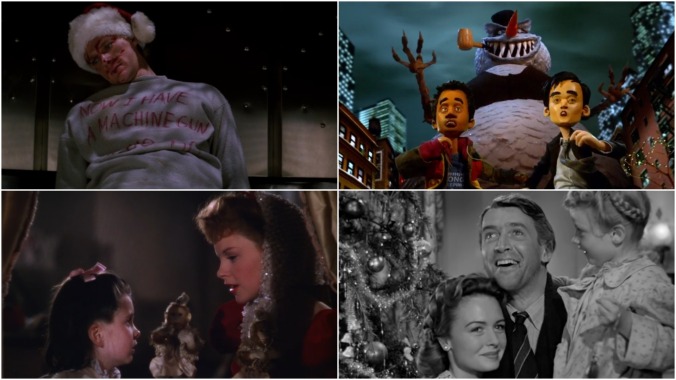
Streaming libraries expand and contract. Algorithms are imperfect. Those damn thumbnail images are always changing. But you know what you can always rely on? The expert opinions and knowledgeable commentary of The A.V. Club. That’s why we’re scouring both the menus of the most popular services and our own archives to bring you these guides to the best viewing options, broken down by streamer, medium, and genre. Want to know why we’re so keen on a particular movie? Follow the links in each slide for some in-depth coverage from The A.V. Club’s past. And be sure to check back often, because we’ll be adding more recommendations as films come and go.
In this edition, we look ahead to the upcoming holiday season, a time usually spent in the company of family and friends who, for their sake and yours, need to be a little more distant this year. But that’s okay: Festive cinematic revelry is just a click away, with Christmas classics traditional (your George Baileys, your Ebenezer Scrooges) and non- (your John McClanes, your S&M Catwomen) on offer from most of the popular streaming services—including a number of vintage holiday features added to HBO Max in recent days. Give the latest Princess Switch and Christmas Chronicles a pass in favor of the following films.
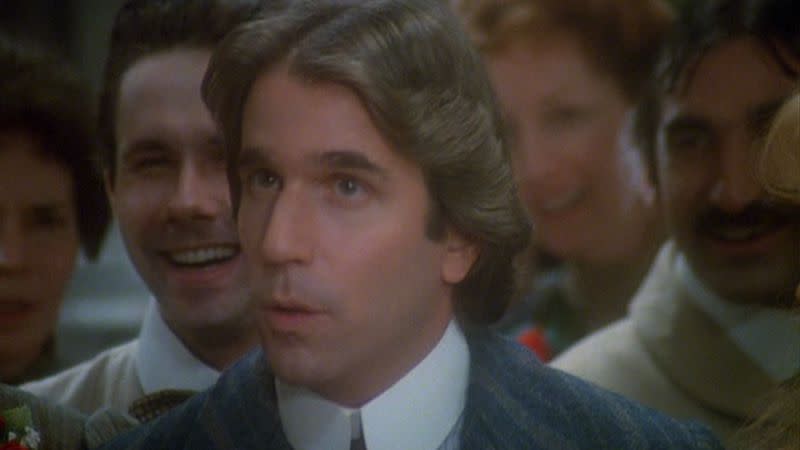
Set during the Great Depression, [An American Christmas Carol] makes good on its title’s promise of offering an American spin on the Charles Dickens classic (despite being shot in Toronto and filled with Canadian actors). Under some impressive (for ’70s television) aging make-up—Rick Baker served as a consultant—[Henry] Winkler plays Benedict Slade, a miserly New Englander with little use for charity and an abiding fondness for sticking it to the poor. He has his reasons, though: For Slade, it’s simply a matter of principle. In business, a deal’s a deal, and if making good on that deal means riding around repossessing his debtors’ possessions on Christmas Eve, so be it. [](Available on , , , and )
For some reason, Arthur Christmas flies its Santa sled under the radar, even though it’s a charming holiday film. It’s produced by Aardman, the same geniuses who brought us the canon, so it has that same dry sense of humor enjoyable for any age. Coming from a world similar to the specials, in Arthur Christmas, the delivery of gifts is also a high-tech operation. Three generations of Clauses are behind it: a retired, doddering old Santa; the current beloved figurehead; Steve, the heir who runs the operation behind the scenes; and his brother Arthur, who reads the Christmas letters. Arthur seems like the most ineffectual one of the bunch until a single present fails to get delivered, and he and his grandpa have to go old school to make sure no child gets forgotten at Christmas. Their caper is thrilling and delightful, helped along by a furiously gift-wrapping elf and some eye-rolling reindeer. And the message that sometimes traditional is better than technological is a great one for your screen-addicted offspring. Whether you’ve heard of it or not, Arthur Christmas would make for a welcome addition to your family holiday canon. [](Available on )
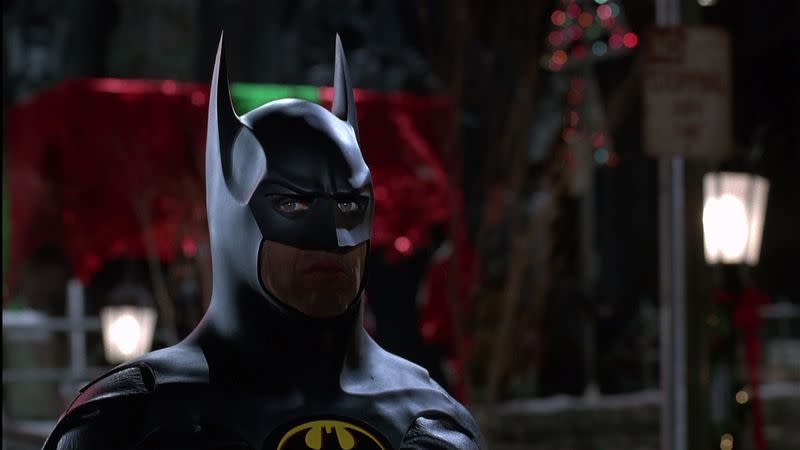
There are a lot of routes into depression in the waning months of each year. Even the most dedicated Christmas celebrators may also be reminded, by virtue of its omnipresence in American culture and despite the war supposedly waged against it, that time is passing and another year is coming to a close. This in and of itself can be cause for celebration, whether you’re especially forward thinking or had an especially shitty year, but holiday rituals can also accumulate, over time, into a series of snapshots focusing on unavoidable changes—or the lack thereof.Fear of aging or trepidation over annual parties are not precisely in the text of Batman Returns, but its mood of holiday melancholy offers a transition from the childlike fun of a kid at Halloween and the more adult-like potential disappointment of the bustling months that follow. [Director Tim] Burton even throws in an Election Day of sorts, with a mayoral recall campaign mounted by The Penguin. (His evil scheme is weirdly and delightfully civics-oriented.) From the frightful masks and misbegotten creatures to the election politics to the festive decorations, Burton’s film takes place not just in December but also in a perpetual fall-to-winter jumble of unease.Batman Returns relies on more than seasonal sadness; in Burton’s hands, the mélange of holidays is eye-popping and a lot of fun, like a deranged Batman Christmas special. Between the missile-armed penguins, machine-gunning organ grinder, and The Penguin’s giant yellow duck-car, the movie hits the sweet spot in the progression from Jack Nicholson’s 1989 marveling over where Batman gets “those wonderful toys” to Joel Schumacher’s more “toyetic” approach in the back half of the ’90s. If anything, Batman Returns proves that even a darker, more personal Batman was already pretty damn toyetic, which may explain why the Schumacher movies felt like such overkill. [](Available on )
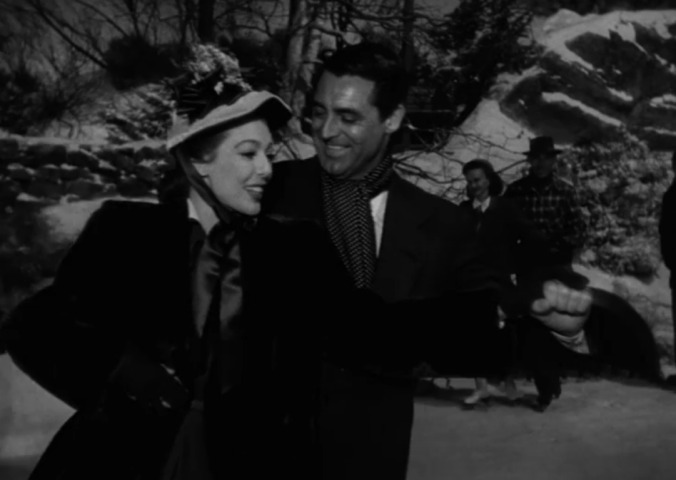
When Bishop Henry Broughman (David Niven) puts up a prayer for help with building a new cathedral, he receives an answer in the ever-charming guise of Cary Grant as the angelic Dudley. Dudley hasn’t come to Earth to pitch in on construction, though: He’s there to help patch up the cracks forming between Henry and his family—an unstated mission that grows complicated when the heavenly visitor starts falling for the titular bishop’s wife, Julia (Loretta Young).(Available on and .)

Holiday movies typically focus on the fundamentals: the importance of home; the safety and comfort of family and friends; and the assumption that, the occasional Grinching aside, peace and goodwill will triumph in the end. Black Christmas sets to work dismantling these assumptions with ruthless efficiency. The movie opens near the end of a sorority Christmas party. As the various partygoers mingle in the warm yellow light indoors, the camera switches to the point of view of a stranger approaching the house, spying on the party from the bushes, and then using a convenient trellis to climb up to an attic window and slip inside. [](Available on , , , , , , , and )

Our favorite Christmas-themed entertainments have elaborate origin myths. It’s A Wonderful Life fell into the public domain and became so beloved because any station could show it for a pittance. A Charlie Brown Christmas was thrown together in a couple of months under a strict deadline. A Christmas Carol became Charles Dickens’ ticket from middle-class writer to literary superstar. And so on. These bits of myth that grow up around our favorite entertainments help embellish their cred as classics worthy of a time of year when believing in miracles becomes slightly more socially acceptable. Squint just hard enough, and the fact that all of these things are as good—and as prominent—as they are comes to have a sense of predestination. These rose above the millions of other pretenders because they were good, yes, but also because they were supposed to.The story of A Christmas Story is mostly just that it got played on TV a lot, and people liked it.Yeah, there have been attempts to embellish that legend a bit. There’s the story about how director Bob Clark decided to take the project on when he was driving around with a date and heard Jean Shepherd’s warm voice on the radio. (He didn’t get out of the car until the story was over; the date didn’t go so well after that.) There’s the bit about how the movie he made immediately before this one was Porky’s, which is always presented as an amusing bit of trivia. And there’s the fact that the movie didn’t make a ton of money upon its initial release, one week before Thanksgiving in 1983. It did well enough, but it didn’t arouse so much attention that it seemed like a potential classic in the making. Critics gave it middling-to-kind reviews but didn’t really laud it, and audiences went to see it but not in massive numbers.No, A Christmas Story got where it is because of TV, and it’s not hard to see why. The movie made its TV debut on HBO in 1985, then slowly made its way toward channels more people had, popping up on WGN and Fox on either Thanksgiving night or the night after Thanksgiving a few times before eventually making its way into the hands of the Ted Turner empire, where it was destined for great things. Even in the ’90s, TV ratings were beginning the long process of splitting into smaller and smaller niches, and networks of all shapes and sizes understood that one of the vital pieces of any year-round ratings puzzle were holiday specials. TNT and TBS bet big on A Christmas Story, showing it more often every year, until arriving at the day-long marathon on TBS that will air again this year beginning Tuesday night. The networks took a good movie that people had responded to and turned it into an event, even as NBC was limiting Wonderful Life airings to one or two per year. A Christmas Story became the de facto American Christmas movie and hasn’t looked back. [](Available on , , , , and )
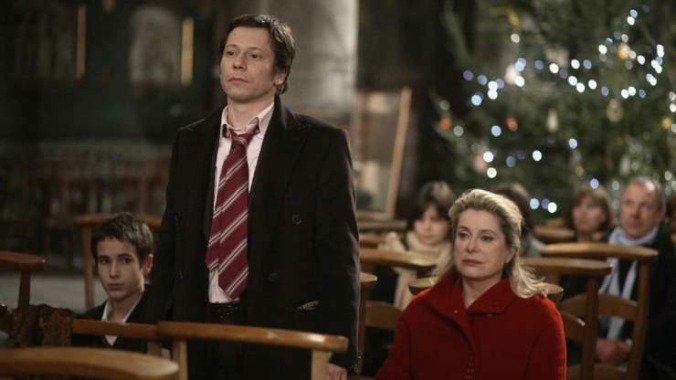
The logline for Arnaud Desplechin’s 2008 film might read something like this: With the matriarch of a large, dysfunctional family needing a bone marrow transplant, her children and grandchildren gather for an emotional Christmas at home. Take away the “bone marrow transplant” part—and replace it, if you’d like, with some other malady or terminal illness—and there’s no real difference between Desplechin’s premise and that of countless holiday narratives that clog the arteries like waterboarding with eggnog. In these films, Christmas becomes a cloying deus ex machina, the heartwarming thing that straightens out complications, salves wounded relationships, and leaves families—the ones on the screen and off—feeling restored and affirmed, and ready for the new year.But here’s the funny trick of A Christmas Tale: It’s totally guilty of doing this very thing, yet it radically subverts it at the same time. Desplechin has made a film that’s as warm as a reindeer sweater, where family members at war with each other find some kind of peace—or, barring that, at least engage in conversations that are open and honest, and steer them away from permanent estrangement. Truth be told, they fight and fight and fight, drunkenly and often belligerently, but it cannot be argued that the old home where they gather is “full of life,” and the soundtrack pulses with eclectic Christmas songs on vinyl. In other words, Desplechin believes in family and Christmas and all the usual bromides, but he doesn’t believe in bullshit, which is what makes A Christmas Tale something special. The family that bickers together sticks together. [](Available on )

Die Hard is a classic for a number of reasons, but one of the smartest and subtlest is the way it turns yuletide trappings into just that: trappings. Strip away those trappings, and the story structure is so simple it’s almost sublime: A group of bad guys, led by [Alan] Rickman, take a building (and everyone inside) hostage. They have demands and ulterior motives, and the heist is so well planned and professionally executed that it doesn’t look like anyone can stop them. Except there’s a catch: [Bruce] Willis, as a New York City cop visiting L.A. to try and patch things up with his estranged wife (Bonnie Bedelia), is stuck inside the building with the bad guys. And even though he’s just a working Joe in bare feet and a tank top, he’s determined to save his wife and the day. [](Available on , , and )

Not since fellow man-child Adam Sandler donned a searing blue suit for Punch-Drunk Love has a costume done so much for an actor: In his oversized green smock with yellow tights and pointy shoes, [Will] Ferrell’s fish-out-of-water character looks almost three-dimensional, and his already-imposing presence balloons into something like The Hulk. An orphan accidentally scooped up by Santa (Ed Asner) and raised by elves at the North Pole, Ferrell doesn’t realize that he’s human until his adopted father (Bob Newhart) explains why he isn’t hitting the toy-making quotas of his pint-sized peers. When he journeys to the Empire State Building to seek out birth father James Caan, Ferrell finds a cold, embittered Grinch who doesn’t have time for his own family, let alone a slap-happy freak claiming to be his long-lost son. Cast out into the streets, Ferrell finds refuge at a department store, where he works for a rummy Santa-for-hire with the charming Zooey Deschanel. [](Available on , , , , and )
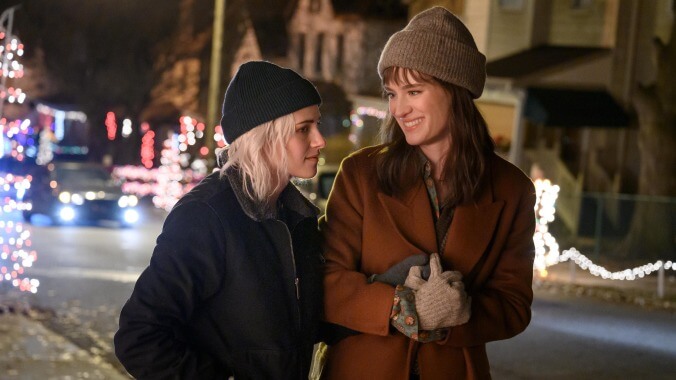
Mix with , add a touch of , and give the whole thing a lesbian makeover, and you’ve got Happiest Season, Hulu’s much-anticipated new holiday rom-com starring Kristen Stewart and Mackenzie Davis. If that makes the film sound a touch derivative, that’s kind of the point. Writer/director/longtime lesbian icon Clea DuVall set out to put a queer spin on the sort of comforting, feel-good holiday romances that straight audiences have been enjoying for decades. And like the similarly trailblazing teen movie , that means Happiest Season feels like nothing you’ve seen before and also like a lot of things you’ve seen before. [Caroline Siede](Available on )
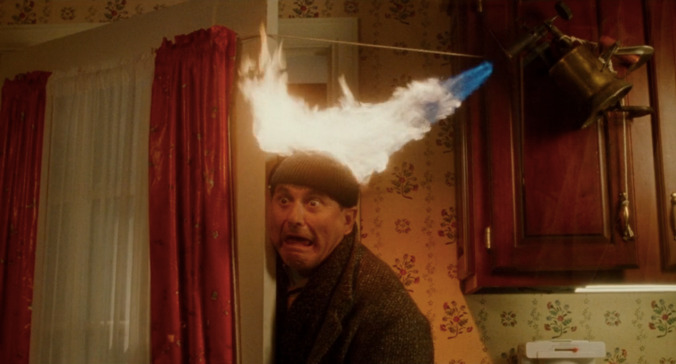
Joe Pesci showing up in Goodfellas and Home Alone in the same two-month span is something I never get tired of thinking about. It’s like if Robert Mitchum had gone straight from Night Of The Hunter to playing Elmer Fudd in a live-action Bugs Bunny movie, and then that Bugs Bunny movie had been the biggest thing since Gone With The Wind. It’s beautiful in its perversity. Even the people who made Home Alone had no idea that it could be anything other than a pretty decent Christmastime moneymaker. The movie’s star was a cute kid, but a total unknown. Its director was just coming off of a notorious bomb. Its tone was both treacly and deranged. Warner Bros., Home Alone’s original studio, had passed on the film when writer and producer John Hughes couldn’t keep the budget under $10 million. In short, Home Alone took everyone by surprise. [](Available on )
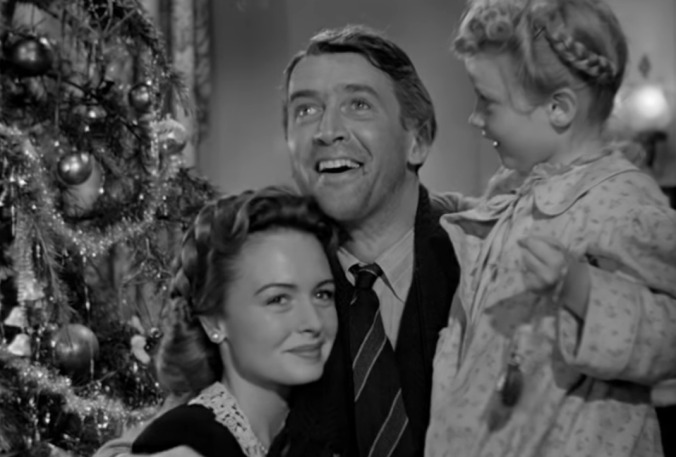
At this point, seemingly everybody who’s written about Wonderful Life in the period after its resurgence in the ’70s (when it fell into the public domain and started popping up every Christmas on dozens of channels) has noted that the film is far darker than its reputation. Where most other classic Christmas films are steeped in warmth and nostalgia—see also: A Christmas Story—Wonderful Life is steeped in melancholy for a world that was and an uncertainty about what life had become. It’s the reverse of Dickens’ Christmas Carol, wherein a good-hearted, middle-class man is warped and frustrated by his inability to live any of his dreams. The movie’s closest thing to a Scrooge figure—Potter—wins out time and again, cackling gleefully about his dominance of the town’s economic affairs, and every victory George wins is simply a victory to keep existing. He, too, has a Christmas epiphany, but it’s not one that convinces him the best thing in life is to live unselfishly. He’s already seen where that got him. No, he realizes the best thing in life is simply to live. [](Available in a colorized cut on and in black-and-white from )
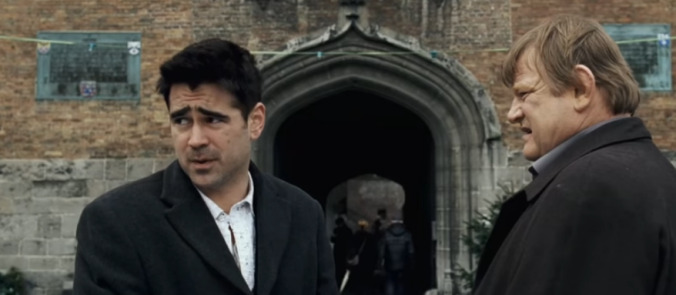
Martin McDonagh’s debut feature only mentions the word “Christmas” a couple of times, but the existential weight of the season hangs so strongly over the film that it’s unnecessary to underline it any further. The story of two hitmen (Colin Farrell and Brendan Gleeson) camped out in Bruges, Belgium, after a murder gone wrong functions as a Christmas film precisely because it deeply inhabits the season’s pensive nature. For its first half, In Bruges more or less operates as a vulgar comedy, much of it featuring Ray and Ken sightseeing around Bruges, like the stars of a crude The Odd Couple Goes To Belgium. It even has a religious bent to it, as the characters struggle with how the realities of their profession brush up against their ingrained Catholic morality. But more than that, In Bruges, like the Christmas holiday, adopts a light veneer mainly as a smokescreen for something much darker—in this case, heady discussions about the guilt and consequences of breaking ironclad moral principles, specifically Ray’s accidental murder of a child. In effect, In Bruges is a moral parable gussied up to look like a Euro vacation film. [](Coming to Peacock December 16)
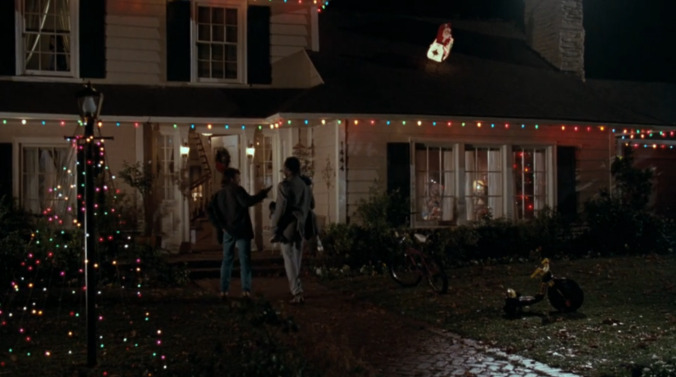
When was released [in May 2013], it heralded the start of the 2013 summer blockbuster season in the way you’d expect: big-name stars, lots of high-definition explosions, climactic battles, and one-liners in equal measure. Yet there were plenty of details throughout the film that made it feel like it should have been released at the end of December. Every single action scene seemed to have a Christmas tree or a string of multicolored lights somewhere in frame. “Jingle Bells,” not AC/DC or Black Sabbath, was the music Robert Downey Jr.’s Tony Stark played as he tried out his new automated suit of armor. And when deprived of that armor later in the film, he purchased a package of Christmas ornaments and repurposed them into flashbangs. It raised a question: Why did Marvel’s latest big-budget film seem to have a secret ambition to be the studio’s first holiday classic?The answer to that question is evident in the film’s writer and director,. While Black’s scripts are famous for their price tags, commanding up to $4 million in his early ’90s heyday, they’re also distinctive for containing as much holiday cheer as they do banter. Beginning with 1987’s Lethal Weapon and continuing throughout his career—1991’s The Last Boy Scout, 1996’s The Long Kiss Goodnight, 2005’s—Black has a penchant for setting his films during the latter half of December. In his world, “Jingle Bell Rock” is the prelude to a drug-induced suicide, gunfights take place in Christmas tree lots, villains turn the benediction of “Merry Christmas” into a veiled threat, and Santa Claus watches someone threaten to jump off the roof. While his tendency to reuse tropes could be seen as hokey, Black surpasses that impression because of the smart way he deploys them. He views the holiday not as a blueprint but as “” In a 30-year career, Black has captured that magic and mastered the genre of the Christmas action film, able to couple them for a distinctive viewing experience. On the surface, all of his films seem to be in the comfortable rather than central to it. Yet, when you consider removing those elements, the film starts to feel as empty as if you’d stripped out the explosions or buddy-movie rapport.A large part of that connection stems from Black’s keen awareness of the emotions associated with the holiday. Martin Riggs (Mel Gibson) tries to talk a jumper down by empathizing that “a lot of people have got problems, especially during the silly season”—and he would know, given that only a few scenes ago he was watching Bugs Bunny’s Christmas Carol with a gun in his mouth. Kiss Kiss Bang Bang’s Harry Lockhart (Downey) is even more depressing, because he’s utterly devoid of connection in the holiday season: We’re introduced to him robbing a toy store, trying to get the identity of the season’s hot toy from his niece. And in Iron Man 3, Stark is forced to flee to a remote Tennessee town after an attack on his life, his only company in the holiday season a similarly alone young boy. Black’s heroes are frequently lost souls, and the sense of melancholy those sort of people feel at this time of year makes them vastly more sympathetic. [](Iron Man 3 available on , Kiss Kiss Bang Bang available on , Lethal Weapon available on )
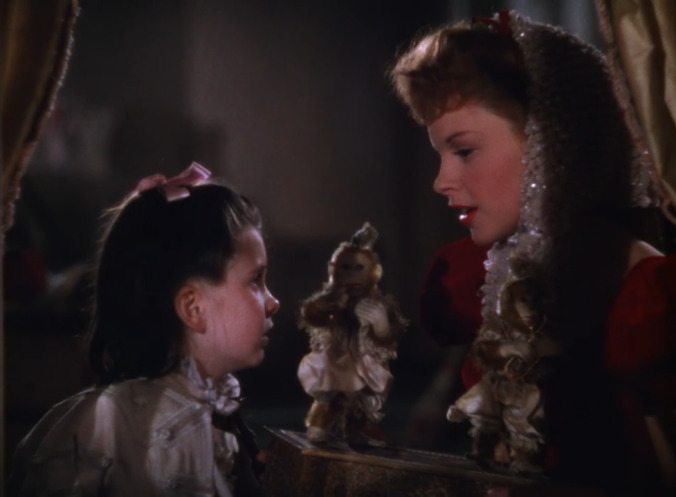
Though most people can probably hum “Have Yourself A Merry Little Christmas,” they’re less likely to know that the song originated in the Judy Garland musical Meet Me In St. Louis. Directed by Vincente Minnelli, the film charts a year in the life of the upper-middle class Smith family as they eager anticipate the 1904 St. Louis World’s Fair—right in their own hometown! While it hits many of the major holidays (Halloween is appropriately spooky), the Christmas segment serves as the film’s heart. After Mr. Smith announces his plan to move the whole family to New York, there’s extra poignancy to what the Smiths assume is their last Christmas in St. Louis. An elegant Christmas Eve ball becomes a high-stakes comedy of errors full of lost tuxedos, absent dates, mischievous dance cards, and underlying anxiety about the future. And later that night when little Tootie (Margaret O’Brien) worries that Santa won’t be able to find their new East Coast home, Esther (Garland) comforts her sister with a ballad that embraces the melancholy of the holiday season. In fact, it basically sends Tootie into a minor emotional breakdown. Though the film may ultimately have a happy ending, those moments of Christmas pathos make it feel like more than just a fluffy musical confection. [](Available on )
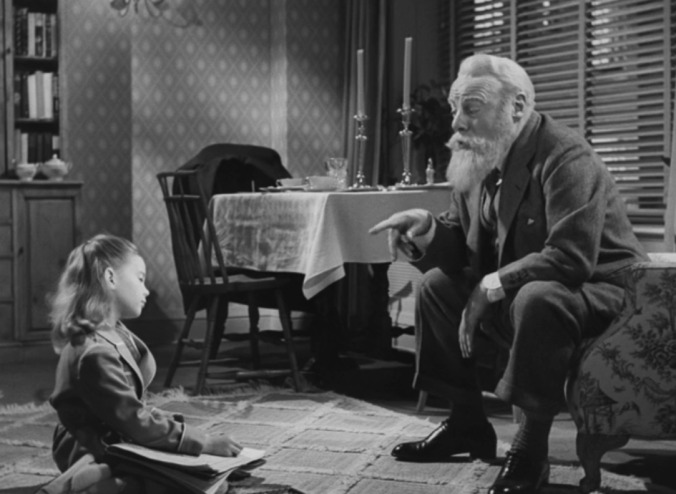
Yes, Miracle On 34th Street is pure Hollywood hokum, a blatant piece of sub-Capra populism designed to advance the controversial proposition that Santa is real and children should be allowed to let their imaginations run free. (How did Fox keep the protestors at bay?) But the film is pretty savvy too, getting a jump on mounting anxieties about the post-war cult of consumerism, soon to be savaged by beatniks, cartoonists, and underground stand-up comics. The story of a real “Kris Kringle” (played by the inimitable Edmund Gwenn) earning the trust of upper management at Macy’s and teaching young Natalie Wood and her progressive mother Maureen O’Hara to believe in Christmas again is really an object lesson in how to put one over on the buying public. What does the Macy’s customer say when Santa sends her to another store to buy her son a fire truck? She congratulates Macy’s on “this wonderful new stunt you’re pullin’.” [](Available on )
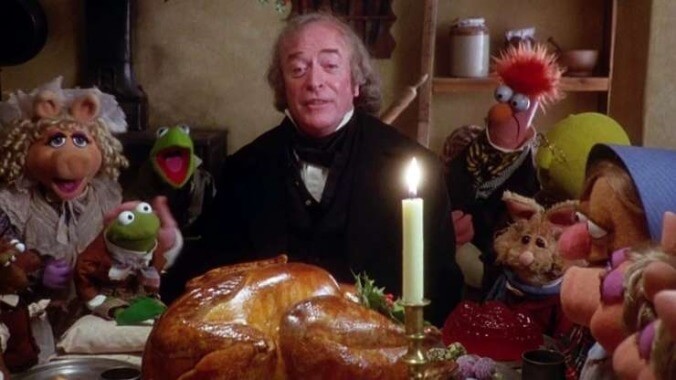
As with any holiday tradition, each new version of A Christmas Carol is vulnerable to the pitfalls of faithfulness and reverence. It’s a lot like our personal experiences with the holiday, expectations forged in the warm heat of nostalgia that never match up to how we “remember” Christmas, or how Christmas is “supposed to be.” This is how tradition, like any other substance that isn’t properly maintained or meaningfully refreshed over time, grows toxic. This is also why The Muppet Christmas Carol may be the most important Dickens adaptation of our time. With dialogue that draws directly from Dickens’ words and the inclusion of typically omitted details, The Muppet Christmas Carol is unusually faithful to its source material. Grim, Dickensian realities are acknowledged, yet all 85 minutes are infused with the energy and the imagination of the Muppets, which give a Christmas Carol a hearty enough shake to keep it from spoiling for a few more years. [](Available on )
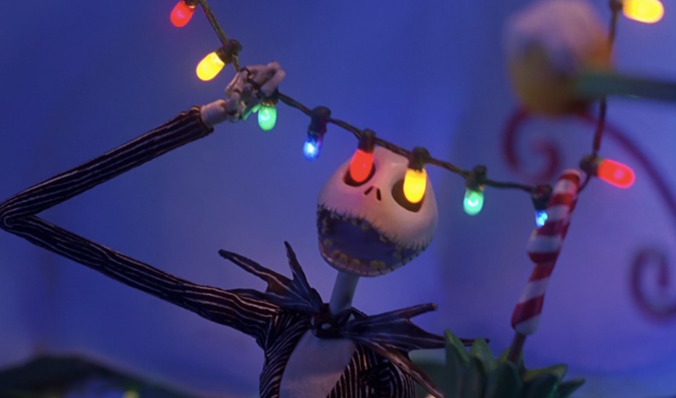
Originally released in 1993, The Nightmare Before Christmas marks almost as much of an advance for stop-motion animation as Pixar’s Toy Story did for computer animation. Directed by Henry Selick from a story and characters created by Tim Burton and a screenplay by Caroline Thompson (Edward Scissorhands), it’s a marvelously imaginative, visually striking film relating the adventures of the good-hearted Jack Skellington (voiced by Chris Sarandon and sung by Danny Elfman), the hero of Halloween Town. Deftly crafted enough to make a skeleton dissecting a teddy bear or the sight of children terrorized by an evil toy duck seem cute, Nightmare taps directly into Burton’s unique sensibility, bringing it to life with highly memorable results. [](Available on )
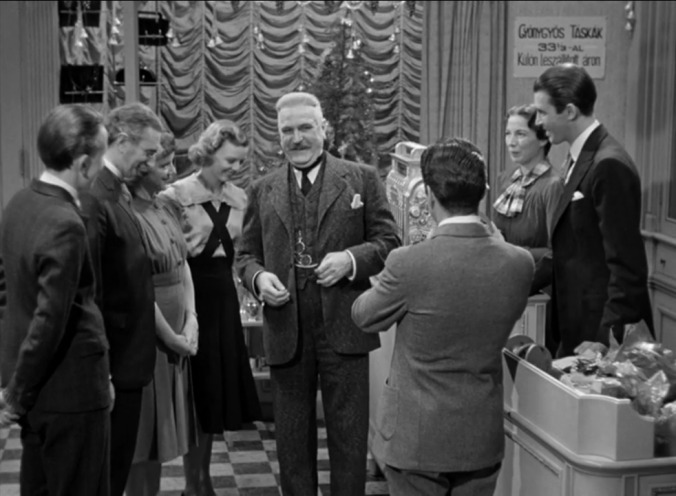
This plot will likely sound familiar: Two coworkers who openly hate each other carry on an anonymous love affair through the mail, and neither of them know the other’s pen-name identity. Set in a small store in Budapest where curiously only one of the employees has any sort of a native accent, Ernst Lubitsch’s The Shop Around The Corner peaks during the holiday shopping season. Real-life friends Jimmy Stewart and Margaret Sullavan play Alfred and Klara, the star-crossed lovers unaware that their loathed co-worker is the person who’s been writing them those lofty letters. The charm and chemistry of the young leads—headstrong Sullavan and lovestruck Stewart—transcends this picture as they battle and flirt, often simultaneously. Just check out the scene when Alfred has figured out that Klara is the writer he loves, and courts her in the shop on Christmas Eve, lit only by holiday lights. You may love this store and its employees so much that you’ll be tempted to check out the 1949 Judy Garland/Van Johnson remake In The Good Old Summertime, which is fine. But by all means, avoid the hackneyed 1998 Tom Hanks/Meg Ryan version, You’ve Got Mail. It’s Christmas, for God’s sake. [](Available on )

From :Story: Retired detective Nick Charles (William Powell), his rich, beautiful wife Nora (Myrna Loy), and their rockin’ dog Asta hit the Big Apple for a holiday getaway and end up helping solve a murder case.Barriers to holiday cheer: New York City homicide detectives are a brazenly incompetent lot, and if someone didn’t catch their murderers for them, there’d be no one left alive in the city by Easter. Reporters get up in Powell and Loy’s faces, braying questions when they’re trying to enjoy themselves, then making up newspaper stories about them. Then angry bedroom-invading gangsters get involved. On top of everything else, having people on their holiday guest list bumped off willy-nilly makes it hard to craft a workable seating chart.Practical, universal lessons: Everyday hassles don’t always just vanish during the holidays, but it’s still a time to have fun and catch up with family and friends, including anyone you’ve arrested in the past and managed to stay on good terms with.Narrow, film-specific lessons: Even if people are getting killed left and right, that doesn’t absolve you of your sacred duty to throw the most kick-ass holiday party in Manhattan.
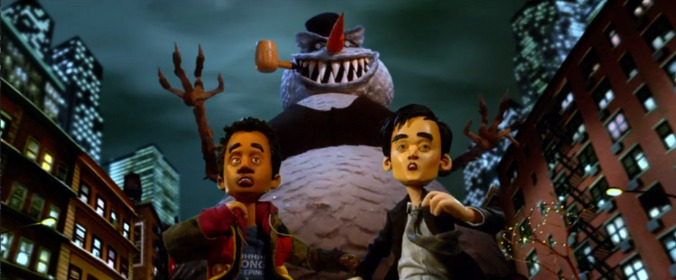
Right from the jump, the [Harold And Kumar] franchise’s third installment makes a quantum leap in both visual and comedic inventiveness. For one thing, it makes relentless fun of 3-D, a running gag that arguably works even better if you’re watching the movie at home in 2-D. For another, director Todd Strauss-Schulson demonstrates more formal panache in any random 30 seconds than the previous films do in their entirety, from a musical Claymation interlude to lightning-quick flashbacks that demonstrate how gross-out humor should be done. (Get ready to duck Danny Trejo’s overly excited reaction to a Christmas tree.) And the film’s general sensibility is radically different: a freewheeling, anything-goes surrealism more reminiscent of than of & Chong. It’s always nice to see spoofing his public image, which he does even more aggressively here than in the first two films, but it’s also nice to laugh during the long stretches when he isn’t onscreen at a commercial for a waffle-making robot called WaffleBot. Because the plot for 3D Christmas pivots on Harold and Kumar no longer being friends, their easy rapport is mostly missing; if a fourth film adds that chemistry to this tone, look out. [](Available on )
The stage comedy —itself an adaptation of the French play La Cuisine Des Anges—yielded two separate Hollywood treatments in the latter half of the 20th century. Both follow escaped convicts assuming new identities, though the identities vary by version: 1955’s We’re No Angels casts Humphrey Bogart, Aldo Ray, and Peter Ustinov posing as faux-handymen assisting a needy family at Christmas, while 1989’s We’re No Angels places its ne’er-do-wells—Robert De Niro and Sean Penn—in a monastery.(Available on . Both film versions streaming on )
GET A.V.CLUB RIGHT IN YOUR INBOX
Pop culture obsessives writing for the pop culture obsessed.